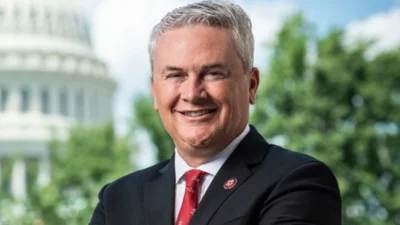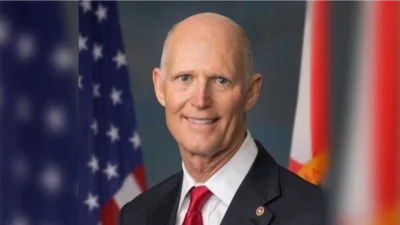Division A: Energy and Water Development and Related Agencies
2018 Enacted level: $43.2 billion
2019 Budget request: $36.54 billion
2019 conference report: $44.64 billion
ARMY CORPS OF ENGINEERS: $6.999 billion, $171.5 million above 2018 enacted and $2.2 billion above the President’s budget request.
* Funding for Investigations is $125 million, which is $2 million above 2018 enacted and $43 million above the request.
* Construction projects receive $2.18 billion, which is $98 million above the 2018 level and $1.3 billion above the request.
* Funding for Operations and Maintenance is $3.74 billion, $109.5 million above 2018 enacted and $1.66 billion above the request.
* Harbor Maintenance Trust Fund projects receive $1.55 billion, $149 million above 2018, $584 million above the request, and $107 million above the 2019 target set by the Water Resources Reform and Development Act of 2014.
* The conference report ensures full use of the estimated receipts for the Inland Waterways Trust Fund.
* The conference report provides for six new study starts and five new construction projects.
DEPARTMENT OF INTERIOR/BUREAU OF RECLAMATION: $1.565 billion for water resources projects, $85 million above 2018 enacted and $508 million above the President’s budget request.
* The conference report mark provides $1.39 billion in water conservation, reuse, reclamation, and drought activities, including funding for programs authorized in the Water Infrastructure Improvements for the Nation Act of 2016.
* An additional $98.7 million is provided for rural water projects.
DEPARTMENT OF ENERGY: $35.69 billion for energy and national security programs and environmental cleanup, $1.17 billion above 2018 enacted and $5.54 billion above the President’s budget request. Funding for DOE programs include:
* $2.38 billion for Energy Efficiency and Renewable Energy, $57 million above the 2018 enacted level and $1.68 billion above the request.
* $6.585 billion for the Department of Energy Office of Science, $325 million above the 2018 enacted level and $1.19 billion above the President’s request.
* $366 million for the Advanced Research Projects Agency - Energy (ARPA-E), $12.7 million above the 2018 enacted level. The President’s request proposed to eliminate the program.
* $276 million for activities related to the electricity grid, including cybersecurity, $28 million above the 2018 enacted level and $119 million above the request.
* $7.18 billion for environmental cleanup activities, $23 million above the 2018 enacted level and $578 million above the President’s request.
* $11.1 billion for Weapons Activities, $458 million above the 2018 enacted level and $83 million above the President’s request.
* $1.949 billion for Nuclear Nonproliferation, $86 million above the President’s request.
* $1.79 billion for Naval Reactors, which is $169 million more than the 2018 enacted level and equal to the President’s request.
* Maintains the Department of Energy loan guarantee programs.
OTHER SIGNIFICANT ITEMS:
* No funding is included for Yucca Mountain, as in previous years.
OUTCOME OF POLICY ISSUES:
* The minibus does not include language from the House bill legislatively repealing the Waters of the United States rule.
* The minibus maintains current law prohibiting the Corps of Engineers from requiring permits for certain agricultural practices.
* The minibus does not include statutory language to prohibit funds for certain operations of the Federal Columbia River Power System to prevent additional spill at dams on the Columbia and Lower Snake Rivers for fish passage of ESA-listed salmon.
* The minibus does not include language from the House bill prohibiting the Bureau of Reclamation from purchasing water in the State of California to supplement in-stream flow within a river basin that has had a drought in the past two years.
* The minibus does not include language from the House bill allowing guns to be carried on all Corps of Engineers lands.
* The minibus does not include language from the House bill prohibiting funds to develop a National Ocean Policy.
Division B: Legislative Branch
2018 Enacted level: $4.7 billion
2019 Budget request: $4.956 billion
2019 conference report: $4.836 billion
The Legislative Branch division of the conference report provides:
* $1.257 billion for the U.S. House of Representatives, which is $32.7 million more than the 2018 enacted level. Within that total:
** Members’ Representational Allowances receive $573.6 million, which is $11 million more than the 2018 enacted level.
** Committee operations and leadership offices receive $169.4 million, which is $113,000 less than the 2018 enacted level.
** $8,800,000 is provided for a new dedicated funding stream for Members’ offices to pay interns. Each Member’s office can use $20,000 of that money to pay interns over the course of the calendar year. Interns paid through this account do not count against the office’s limit on paid employees. The Senate has established their own similar funding stream in the bill.
* $456.3 million for the U.S. Capitol Police, which is $29.8 million more than the 2018 enacted level.
* $50.737 million for the Congressional Budget Office, which is $792,000 more than the 2018 enacted level.
* $733.745 million for the Architect of the Capitol, which is $21.64 million more than the 2018 enacted level.
* $696.1 million for the Library of Congress, which is $26.2 million more than the 2018 enacted level.
** Within that total, $43.589 million is provided for the Copyright Office, which is $15.1 million more than the 2018 enacted level.
** Also within that total, $125.69 million is provided for the Congressional Research Service (CRS), which is $6.4 million more than the 2018 enacted level.
* $117 million for the Government Publishing Office, which is equal to the 2018 enacted level.
* $589.75 million for the Government Accountability Office, which is $10.8 million more than the 2018 enacted level.
* $5.6 million for the Open World Leadership Center Trust Fund, which is equal to the 2018 enacted level.
* $6.33 million for the Office of Compliance, which is $1.37 million more than the 2018 enacted level.
The conference report also provides $174,000 for a death gratuity payment to the family of Senator John S. McCain III of Arizona.
OUTCOME OF POLICY ISSUES
* The conference report provides a Cost of Living Adjustment (COLA) funding for each Legislative Branch agency contingent on Executive Branch employees receiving a COLA.
* The conference report continues the Member pay freeze.
* The conference report also eliminates the office of the former Speaker of the House. Currently, all former Speakers receive an office and budget for five years upon their retirement from Congress.
Division C: Military Construction, Veterans Affairs, and Related Agencies
2018 Base Enacted level: $91.991 billion
2018 OCO Enacted level: $750 million
2019 Budget request base: $96.129 billion
2019 Budget request OCO: $921 million
2019 conference report: $97.086 billion
2019 conference report OCO $921 million
MILITARY CONSTRUCTION: The conference report provides $10.332 billion, which is $241 million more than the 2018 enacted level, for Military Construction programs.
* Total funding for Active Components is $7.131 billion, which is $103 million more than the 2018 enacted level.
* Total funding for Reserve Components is $465 million, which is $2.1 more than the request.
* $1.583 billion for Family Housing construction, which is $173 million more than the 2018 enacted level.
* $342 million for the Base Realignment and Closure (BRAC) account, which is $74 million more than 2018 enacted level.
* The conference report continues language preventing the transfer of detainees and prohibiting closure or realignment of Naval Station Guantanamo Bay, Cuba.
OTHER MILTARY CONSTRCUTION ISSUES:
* Energy Resilience and Conservation Investment Program (ERCIP) - The conference report provides $193.4 million for ERCIP, an increase of $43.8 million over the budget request to fund the top six unfunded requirements of the program for energy resilience.
* Funds for Enhancing Security and Safety - The conference report includes $100 million in additional funds for various military construction accounts for enhancing force protection and safety at military installations.
VETERANS AFFAIRS: The conference report includes $86.487 billion in discretionary funding, which is $5 billion more than the 2018 enacted level, including:
* As authorized by Congress in 2009, the VA medical services accounts are provided funding one year in advance, and the 2019 conference includes $75.6 billion in discretionary funding for the FY2020 advance appropriations for VA medical services.
* $1.840 billion for the current year budget request for medical services. This is in addition to the FY 2019 advance appropriation provided in the FY 2018 law.
* $779 million for Medical and Prosthetic Research, which is $57 million more than the 2018 enacted level.
* $1,127 billion for Construction, Major Projects, which is $615 million more than the 2018 enacted level.
* $356 million for VA General Administration, which is $20 million more than the 2018 enacted level.
* $4.103 billion for VA Information Technology, which is $48 million more than the 2018 enacted level.
OTHER VA ISSUES:
* Deferred VA Infrastructure - The conference report provides the second installment of $2 billion for VA infrastructure needs. The breakout of the funding is $750 million for seismic improvements; $300 million for Major Construction; $800 million for Medical Facilities for non-recurring maintenance; and $150 million for Minor Construction.
* Electronic Health Records (EHR) Account - The conference report provides $1.1 billion for activities related to the development and rollout of a new VA electronic health record, the associated contractual costs, and the salaries and expenses of employees hired under titles 5 and 38, United States Code. Because this is a very substantial new effort, and the timing of obligation is uncertain the agreement makes these funds available for three years. The EHR account is intended to be the single source of funding within VA for the EHR effort. There is no authority for funds from other VA accounts to be transferred to this account or for funds from this account to be transferred to other accounts. Consistent with the effort to centralize financial management of the development of the EHR, the conference report continues to direct the Department to place top management of the project with the Office of the Deputy Secretary.
* Mental Health Funding and Suicide Prevention - The conference report provides $8.6 billion for mental health programs, which is $6 million above the request, and includes $206 million for suicide prevention outreach, an increase of $16 million above the request.
* Opioid abuse - The conference report provides $348 million for opioid treatment and prevention programs and $52 million to continue to implement opioid safety initiatives outlined as part of the Comprehensive Addiction and Recovery Act, as well as to develop programs aimed at ensuring that non-VA providers treating veterans through community care programs are informed and in compliance with all VA standards for opioid safety and prescription guidelines.
Source: U.S. Department of HCA








